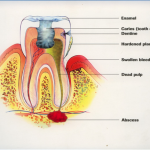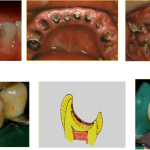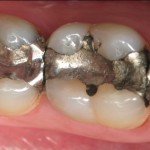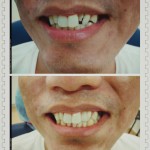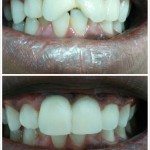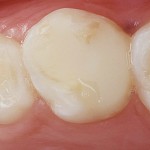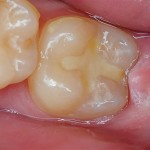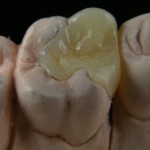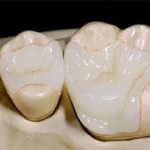Restoration
Dental restorations can be divided into two broad types: direct restorations and indirect restorations.
Restoring a tooth to good form and function requires two steps, (1) preparing the tooth for placement of restorative material or materials, and (2) placement of restorative material or materials.
The process of preparation usually involves cutting the tooth with special dental burrs, to make space for the planned restorative materials, and to remove any dental decay or portions of the tooth that are structurally unsound. If permanent restoration can not be carried out immediately after tooth preparation, temporary restoration may be performed.
Materials used may be gold, amalgam, dental composites, glass ionomer cement, porcelain or any number of other materials.
Direct restorations
This technique involves placing a soft or malleable filling into the prepared tooth and building up the tooth before the material sets hard. When fillings become larger, indirect restorations may be the best choice in some cases.
Material used :
- Amalgam
Dental Amalgam is now mainly used for posterior teeth as its silver colour of materials.
2. Composite resin
Composites are also called white fillings, used in direct fillings. Crowns and in-lays can be made in the laboratory from dental composites. These materials are similar to those used in direct fillings and are tooth-colored. Their strength and durability is not as high as porcelain or metal restorations and they are more prone to wear and discolouration.
3. Glass ionomer cement
A glass ionomer cement (GIC) is one of a class of materials commonly used in dentistry as filling materials and luting cements.
As they bond chemically to dental hard tissues and release fluoride for a relatively long period, it usually used for restorations in primary teeth ( baby teeth) .
Indirect restoration
In this technique the restoration is fabricated outside of the mouth using the dental impressions of the prepared tooth. Common indirect restorations include inlays and onlays, crowns, bridges, and veneers. The finished restoration is usually bonded permanently with a dental cement. It is often done in two separate visits to the dentist. Common indirect restorations are done using gold or ceramics.
Materials used
- Precious metallic alloys- gold alloys
- Base metallic alloys -cobalt-chromealloy, nickel-chromealloy
- 3. Porcelain (ceramics)
All-ceramic Dental Onlay for a molar tooth.
Full-porcelain dental materials include Dental porcelain, other ceramics, sintered-glass materials, and glass-ceramics as indirect fillings and crowns or metal-free “jacket crowns”. They are also used as in-lays, on-lays, and aesthetic veneers. A veneer is a very thin shell of porcelain that can replace or cover part of the enamel of the tooth. Full-porcelain restorations are particularly desirable because their color and translucency mimic natural tooth enamel.
Another type is known as porcelain-fused-to-metal, which is used to provide strength to a crown or bridge. These restorations are very strong, durable and resistant to wear, because the combination of porcelain and metal creates a stronger restoration than porcelain used alone.
